Guest article & photos by Michel Sacco
Newport may be a town of millionaires and I am a light-pocketed boater, but I feel at home there. The extravagance of the overly large yachts and hotels where one cannot afford to stay doesn’t spoil my enjoyment. Here, you can feel the vibrant heart of the yachting tradition, the love of beautiful hulls and the passion for maritime heritage. Newport and the East Coast know how to cultivate good taste that is part of New England’s identity as a nation of sailors.
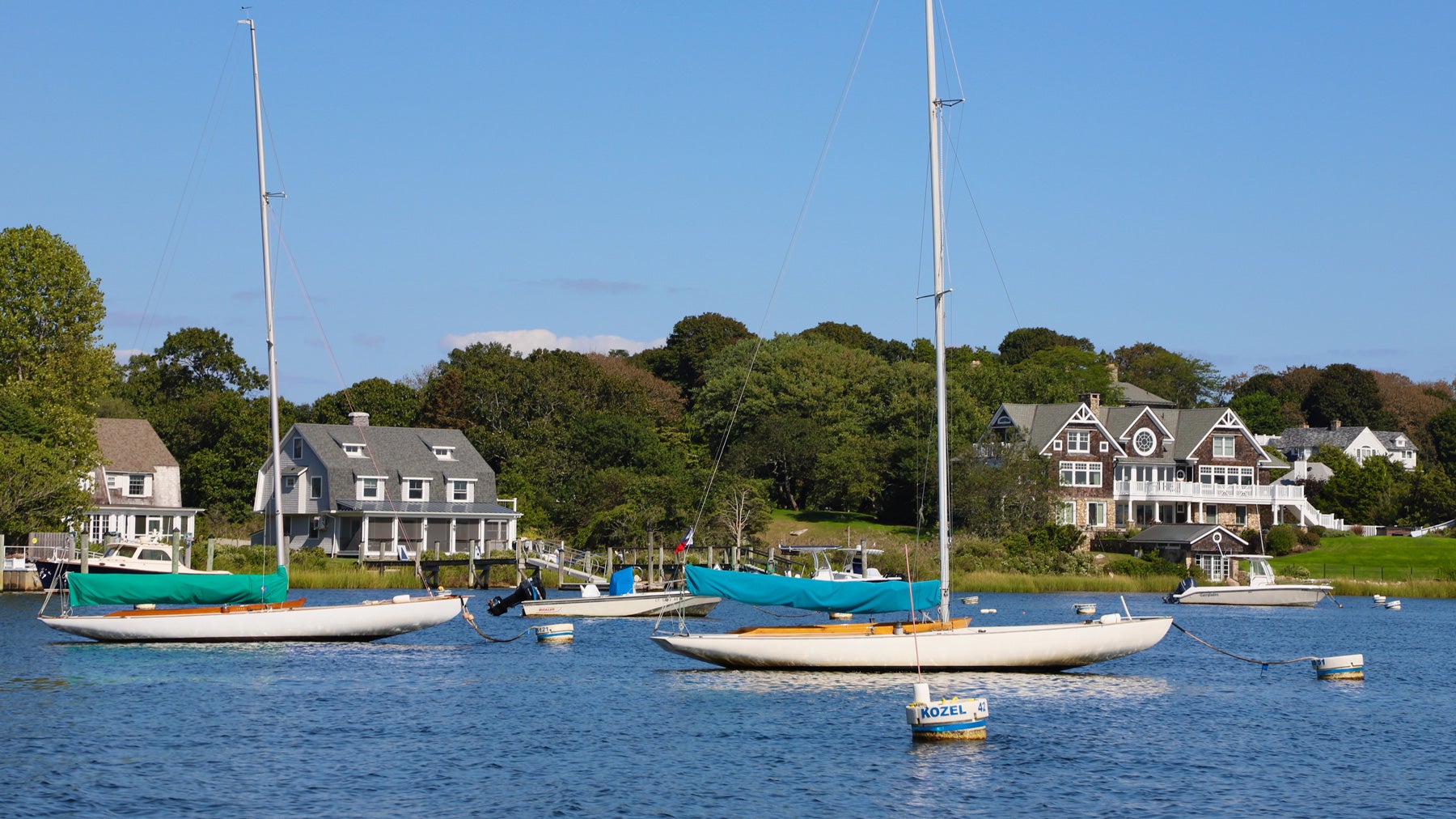
It is pleasant to come here in September when the summer crowds have calmed down and it is possible to find a mooring in the harbor. The US$60 for a mooring booked on Dockwa puts you in the front row of the constant spectacle of Newport harbor and gives you access to a beautiful stroll through town.
The America’s Cup may have moved to Australia since Liberty’s defeat in 1983, but the 12-meter JI boats have remained the lords of the bay. Although many of them have been converted for tourism, the competition fleet is still alive and well, as evidenced by last summer’s world championship organized here.
On Thames Street Quays, a former thermal power station has become a traditional shipbuilding and repair school. The International Yacht Restoration School (IYRS) was born from the enthusiasm of a classic yachting enthusiast, Elizabeth Meyer. The lady spent a fortune restoring the J-Class Endeavor for five years.
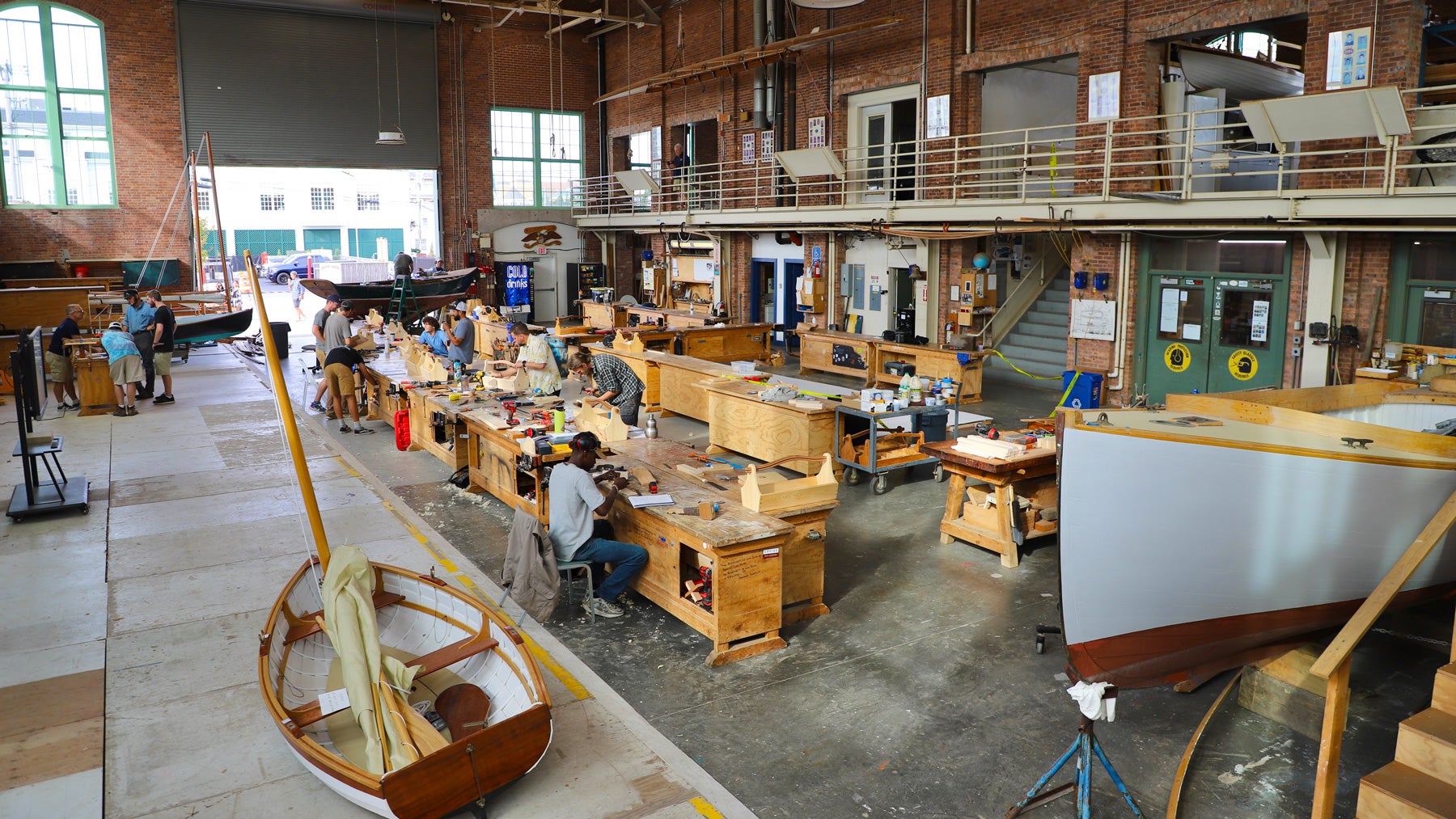
She continued her approach by opening the IYRS with the help of marine painter John Mecray. Students of all ages and backgrounds complete training programs here lasting six to twenty months. In the workshop courtyard, piles of Beetle Cat hulls waiting to be brought back to life. They will be refurbished according to the rules of the art and sold ready to sail for $15,000. Visitors can stroll on the mezzanine which overlooks the workshop and take a look at the pontoons where gleaming classic units are moored. A moment of emotion seized me when I found myself face to face with Dorade. Olin Stephens’ design launched in 1930 was the first Marconi rig to achieve such success in offshore racing. The 16-meter yawl seems to defy time; you would think she had just touched water for the first time. These are the great surprises that Newport has in store for boat enthusiasts.
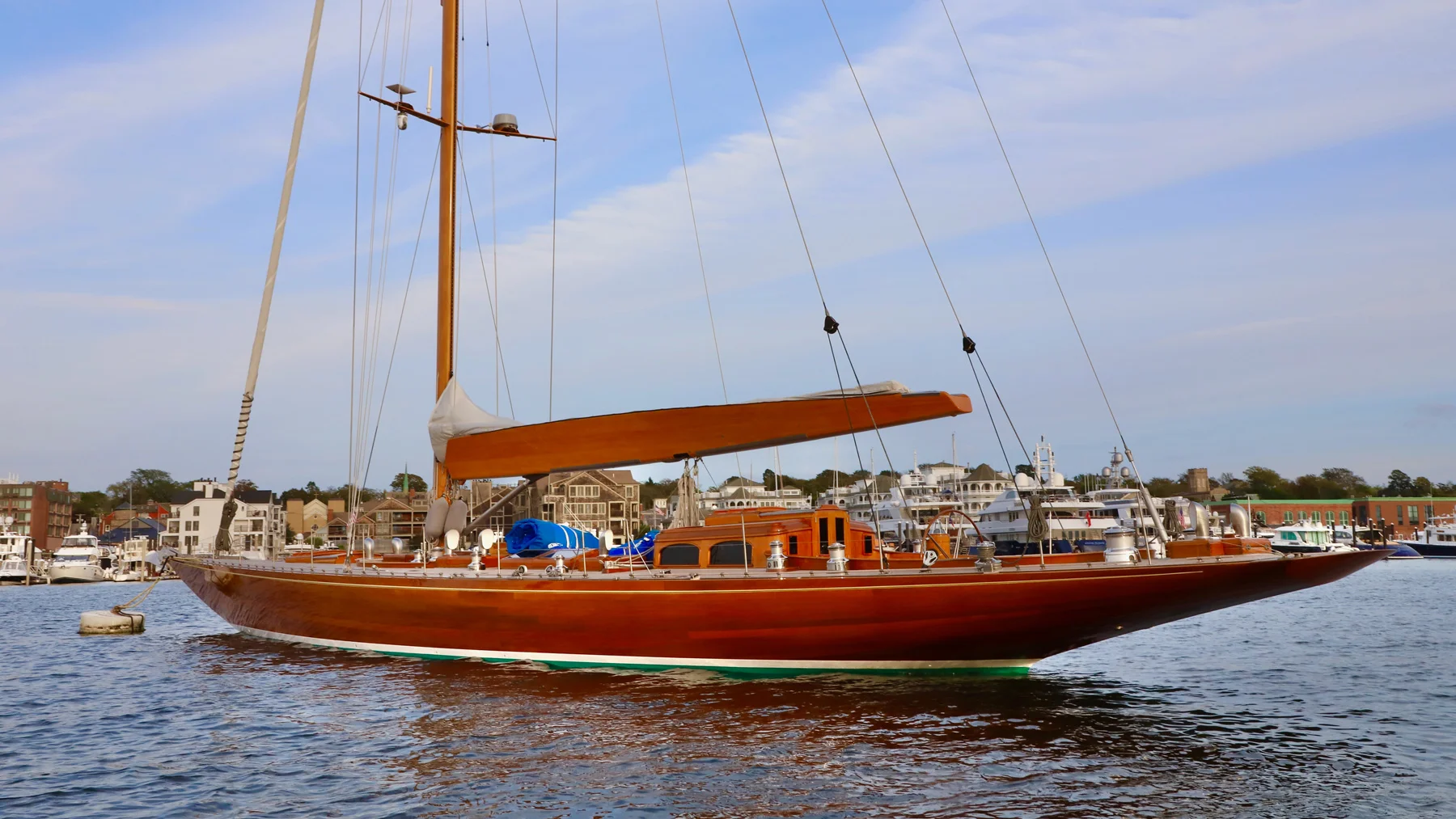
The old town is built on a gently sloping hill on the east bank of the port. It preserves several remarkable buildings built during the British regime and beautifully maintained. The characteristic style of the 18th century facades continued with the constructions of the following century. Many of them are listed on the National Register of Historic Places. The Newport Restoration Foundation, established in 1968 by philanthropist Doris Duke, acquired seventy-four properties which it professionally restored. This initiative has made it possible to preserve in Newport the largest concentration of 18th century residences in the United States. The foundation offers its properties for rent and continues to maintain them meticulously. Take a stroll through this peaceful historic neighborhood, located just a short distance from Thames Street.
On the way to “The Forks”
A six-day charter from Newport offers several interesting destinations, including a few I’ve previously explored. Six days of charter go by very quickly. In September, plan for a day of bad weather that will stick you to the port; there are only five days left. If you don’t want to tire the crew with daily hauls of more than 50 miles, concentrate on a smaller radius of action. This will save you from racing against time and everyone will be better off for it.
I chose to head to the eastern end of Long Island, commonly known as The Forks. The eastern end of Long Island ends in two long, thin points 18 miles apart which earn it this nickname. The port of Montauk on the southern tip of the fork intrigued me. We discovered it after a long day of sailing of almost 45 miles in harsh weather and a slight southerly wind right in our face. Two mackerels caught while trailing our lines helped to console the drenched crew.
Lake Montauk was once a body of water with no passage to the sea. According to the nautical guide, a businessman had the channel dug in 1929 to develop a tourist center on site. We cross the harbor where we lose count of the yacht clubs and marinas on either side of Star Island. We have to weave our way through a very narrow channel to access the vast anchorage site in Lake Montauk. It is a remarkable shelter where one could wait out a hurricane. We are surprised to find only two other boats at anchor. The explanation will come later.
We are in a vacation area of a very prosperous New York bourgeoisie. The cottages are hidden in the vegetation, set back from the sandy coastline. The entire region of Long Island is made up of marshes and wetlands that are particularly rich in terms of biodiversity. Several foundations funded by wealthy donors have acquired land and implemented conservation policies. Despite its proximity to the largest northeastern US cities, Long Island still has a lot of natural territories.
Located at the confluence of the waters of the Atlantic and the strait which leads to New York, Montauk benefits from waters full of fish for which it is famous. Here, the big deal, the only one that really matters, is sport fishing. And the bigger the catch, the better off the fisherman will be.
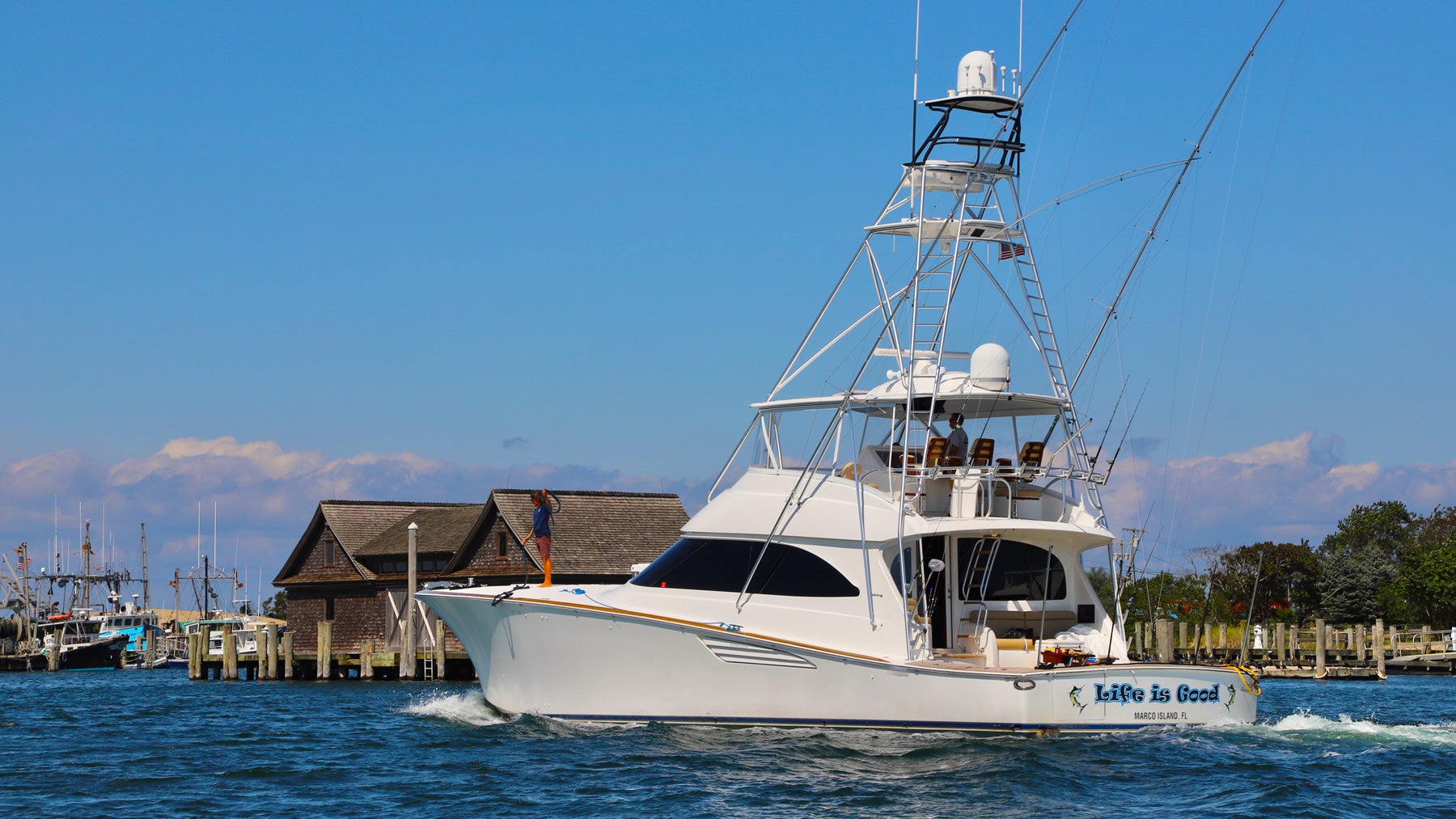
I had never seen anything like it before. A spectacular fleet of fishing vessels made up of incredible machines that seem to come straight out of a James Bond film. The high and strongly flared bow, the completely uncluttered deck, the wheelhouse resembling a racing car, all topped by an observation bridge to detect schools of fish. These war machines are designed to travel at 40 knots across the ocean, 100 miles offshore, in search of worthy prey: tuna, sharks, swordfish. We are in the midst of the millionaires’ fishing quarter. It is best to avoid pronouncing the three accusatory syllables here: G.E.S. You risk ending up fileted like the fish.
We wandered for half an hour through the basins trying to find a dock to moor our dinghy. It was in vain, that’s not how things are done around here. The high society doesn’t travel with their rear end in a dinghy. We finally managed to get pity from someone and were able to disembark and take a short tour. There wasn’t much to see in this old fishing village, which used to be known as “The End”. The charter fishing piers, the bistros set up in the passage, the commercial fishermen’s quay that didn’t seem to belong to the same world as their neighbors, a few shops, and a beautiful fish market made up the short tour. We quickly left Montauk without asking for more, as we didn’t feel like we belonged there. The visit to the famous lighthouse will have to wait for another time. However, I do recommend the mooring, a well-located stopover for a loop at the entrance of Long Island Sound.
From Three Miles Harbor to Coecles Harbor
We needed some fresh air after the rough stopover in Montauk. We pushed west between the two branches of the fork towards a succession of inland bodies of water protected by Gardiners and Shelter Islands. This quasi-lacustrine system extends more than 30 miles into the mouth of the Peconic River. A series of channels wind between the coastline and the sandbanks and reveal so many maritime microcosms. The region has the particularity of constituting an environment with an estuarine character in the middle of an oceanic system. The tides feed vast wetlands above which there was once rich agricultural lands.
Our tight schedule did not allow us to explore the great Peconic Bay, but two stopovers allowed us to discover a small part of the body of water.
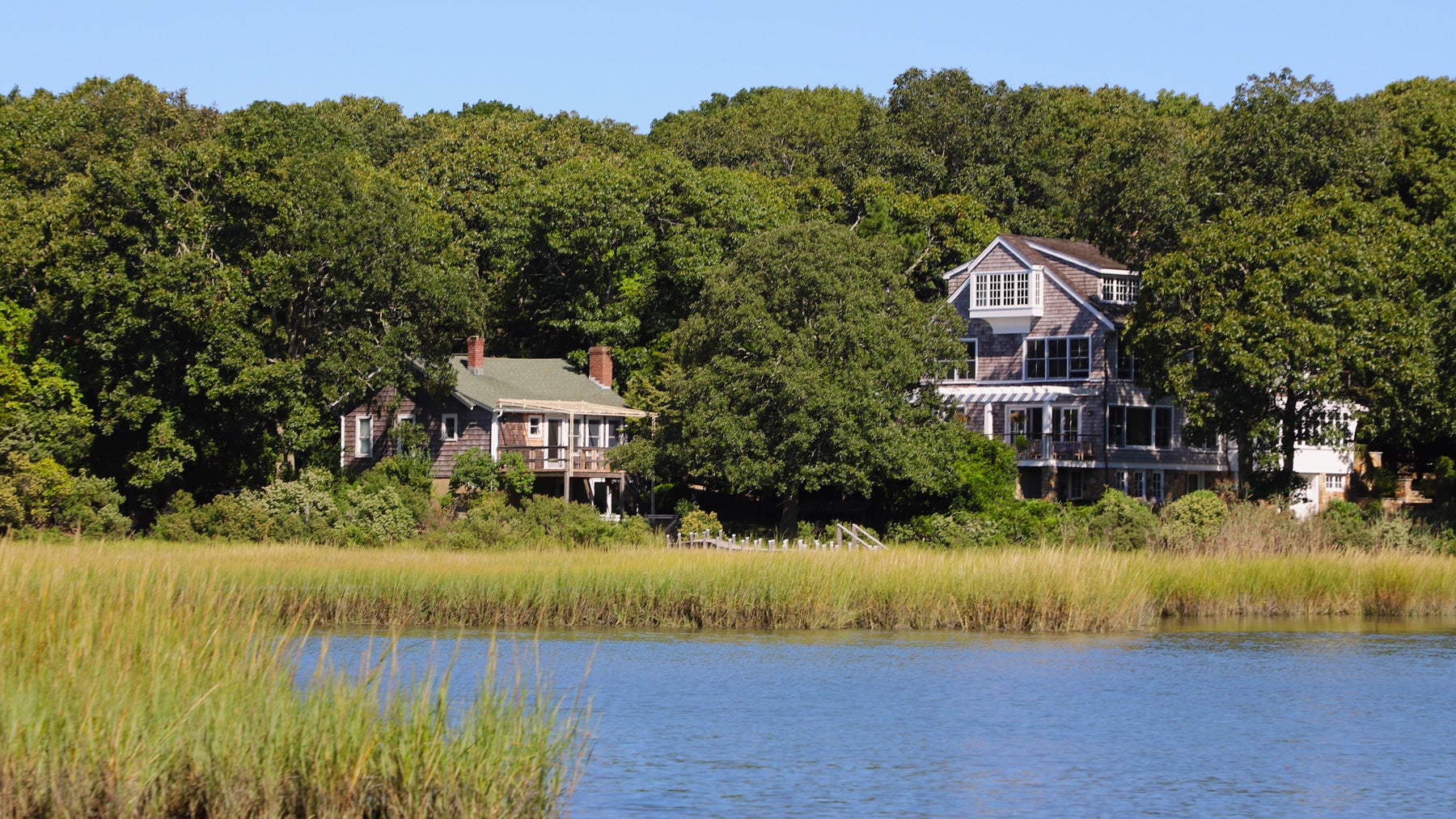
Three Miles Harbor is another of those completely landlocked bays that are one of the hallmarks of this part of Long Island. The same scenario of a beach with a narrow channel is often repeated. However, access is without difficulty. The approach is pleasant as the landscape gently unfolds to the rhythm of the curves of the channel. Several small marinas are nestled in wetlands on the eastern shore. In the center, a quiet pool where you have complete freedom to anchor. Sigh of relief, nature takes back its rights. Behind the dune barriers which protect the bay on either side, small channels allow you to pass through the aquatic grass beds. The cottages with their typical cedar shingle facades are surrounded by abundant vegetation. The resort respects nature and gets along well with bird colonies. We enjoy the spectacle of great egrets perched on the branches above the mudflats. In the maze of the swamp, the nonchalance of the swan couples makes you want to forget the journey to the next stopover and let time slip by.
Coecles Harbor is just a five-mile hop away. We enter it once again through a sandbar which gives access to a bay which stretches for more than two miles inside Shelter Island. Prosperous local residents have their eye on boaters. Personal watercraft are prohibited and anchoring is only permitted within a perimeter defined by warning buoys to the south of the bay and for a maximum duration of two nights.
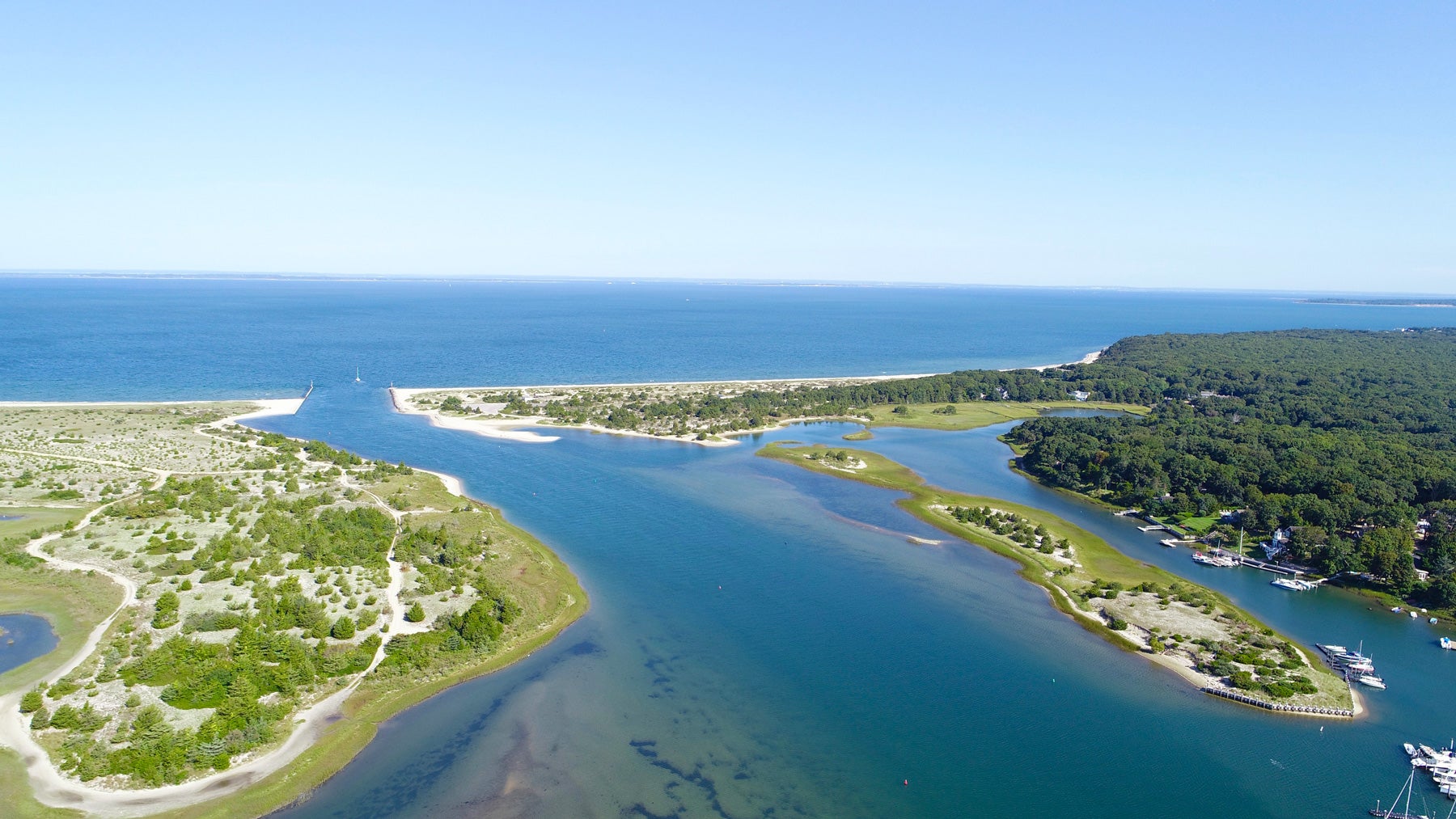
Another perfect and quiet shelter where we enjoy the happiness of September afternoons by taking a dip in the still warm summer water. There are only three boats in this pretty basin.
The Mashomack nature reserve and its trails are located in the immediate vicinity, but unfortunately we cannot dock there with the dinghy. A third of the island’s surface area belongs to a non-profit organization dedicated to the preservation of natural environments, The Nature Conservancy. To enjoy the park, you have to go around the island and go to Dering Harbor to jump in a taxi.
We are left to disembark on the Ram Island dune. On the shore, we find the familiar presence of anglers. They are always present in the passes and are part of the decor of a country of fishing rod enthusiasts.
At the end of the beach, the walk begins in one of those discreet millionaires’ gardens which constitute the usual setting of the Long Island countryside, if you can call them that. The small, privileged community of 3,200 inhabitants spends peaceful days in an environment of extreme tranquility where I defy anyone to find a trace of bad taste.
Finishing in style at Watch Hill
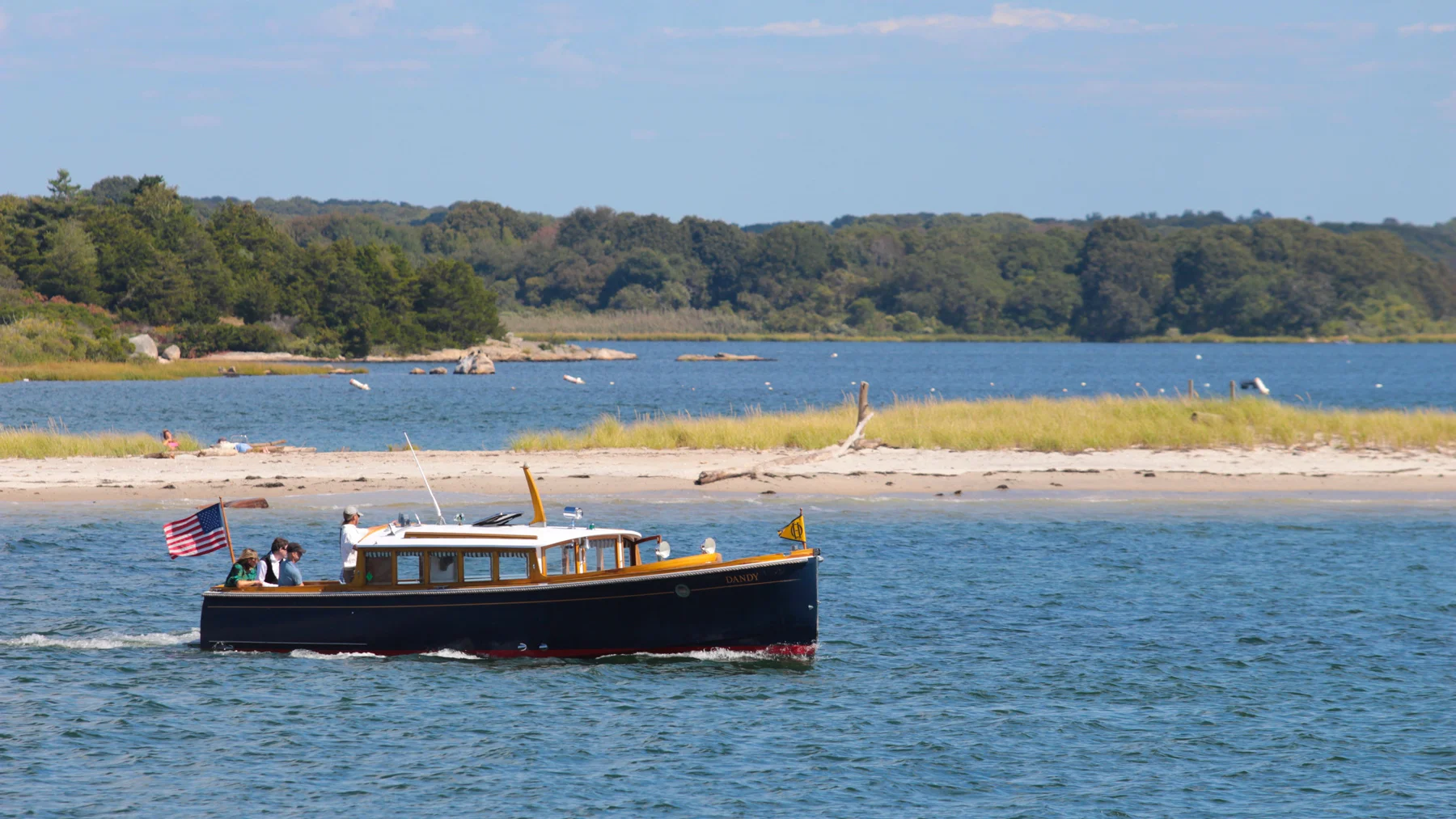
The announced return to Newport promises to be difficult in the rain and freshening winds. To avoid a long day of hardship for the crew, I resolve to abandon the exploration of Peconic Bay.
We will leave Long Island to cross the sound to Watch Hill on the north shore. I have already told you about this stopover. The approach is delicious. We head straight on to the western end of the long sandbar of Napatree Beach which we round so closely that we almost have the impression that we could land there as we pass by. The sandy strip forms a long dune a mile and a half long where the locals come to place their bows on the shore and harvest the sweetness of what remains of summer. At the end of the dune, a pretty circular anchorage basin nestled at the foot of a gently sloping hill which gave its name to the small town.
Watch Hill is a very prosperous small community, a summer residence for a select group of millionaires since the 19th century. Back then, people would spend afternoons sailing or on the golf course before gathering for tea at Ocean House.
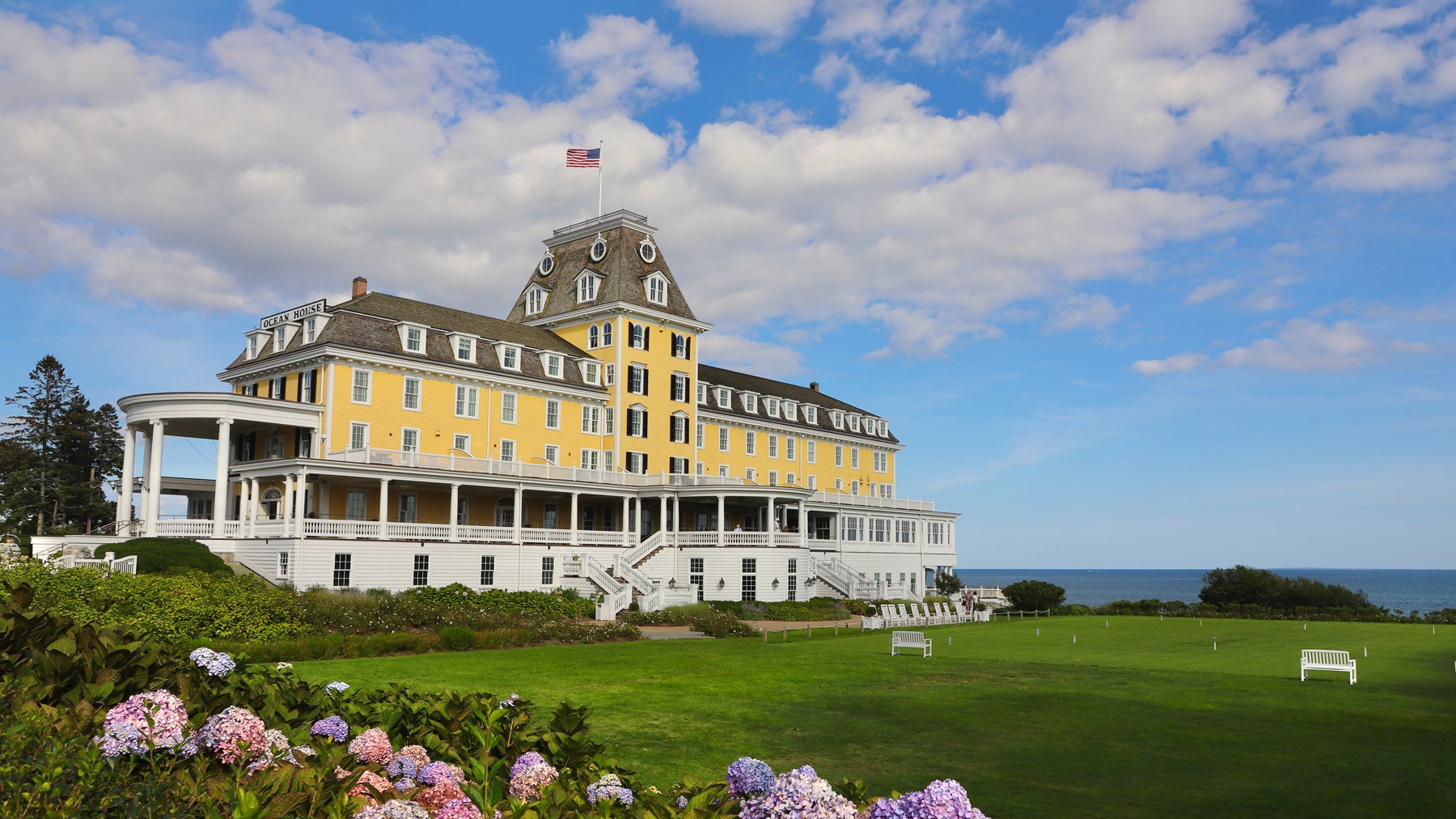
Several of the elegant cottages facing the sea have earned inclusion in the National Register of Historic Places. I challenge you to find litter lying around in the streets or any trace that is in bad taste. The local bourgeoisie, heirs to old fortunes, cultivates discretion.
As soon as we set foot on land, we came across a little Victorian marvel, the yacht club building. This is enough to make most of the nautical clubs I have visited die of envy. While strolling along the quay, there is a good chance that you will come face to face with a magnificent classic yacht gleaming with all its varnish.
Walkers from the region happily come to spend the afternoon at Watch Hill to stroll by the sea, stick their noses in front of the windows or even admire an impeccably restored classic car. If you take a few minutes to chat with these day visitors, they will all make the same remark: “Did you know that Taylor Swift has a house here?” Yes, we know it. It’s the talk of the town.
The singer treated herself to Holiday House, an imposing building dominating the hill like a fortified castle. It once belonged to Standard Oil heiress Rebekah Harkness, who disturbed the small preppy community with her extravagant parties. Swift has taken over with her own festive habits and happily mocks the local bourgeoisie in her song Last Great American Dynasty where she talks about how it was her turn to ruin everything.
We took advantage of a delicious late afternoon in the mildness of the first days of autumn to settle down on the terrace of Ocean House. The palace, built in 1868, has seen numerous crowned heads pass through its doors. The hotel was completely rebuilt in the 2000s. The property is a real delight that extends all the way to the beach. You will have to pay a whopping US$1000, the entrance fee, to hope to be able to sleep there for one night. We were literally robbed for the pleasure of sipping an aperitif overlooking the Long Island Sound. No one complained; good memories are priceless.
______________________________________________
Contact our expert Charter Planners and get ready for summer sailing with a bareboat or skippered charter in Newport from our base in Warwick, Rhode Island.
